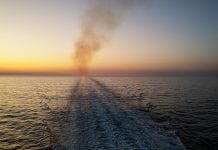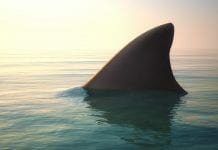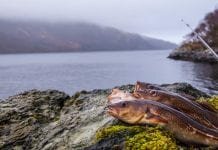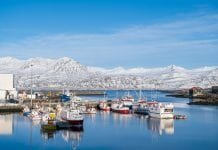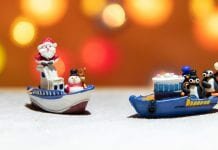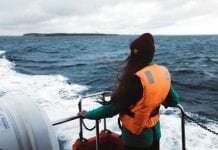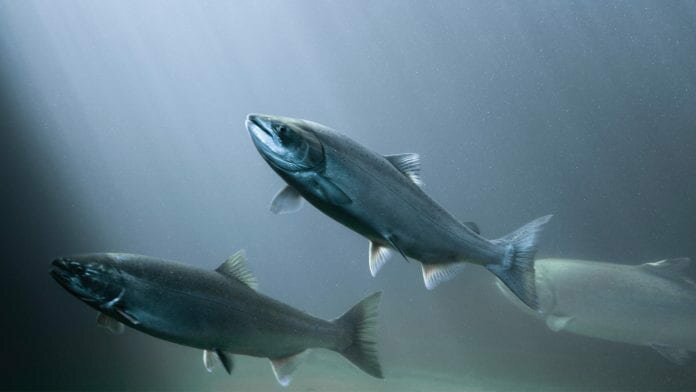
Meet Blue Unit, the company with the world’s most advanced automatic data visualisation system to monitor water quality parameters.
The monitoring of changes in water chemistry around a recirculating aquaculture system (RAS) farm, combined with rapid management decisions, is key to establish a stable environment for good fish performance. Blue Unit’s centralised lab station measures water quality parameters around an entire RAS farm and delivers data to a cloud based platform for data analysis and visualisation. This allows for well informed decisions in real time. Using a data platform also enables big data learning to provide knowledge to farm owners and management to help both the design and operation of RAS farms in the most optimal way.
Historically, relatively low levels of data have been made available in terms of demonstrating success in the fish farming industry. However, the last decade has seen land-based farming becoming far more industrialised. This industrialisation process has pushed the boundaries of RAS control systems, tank sizes, water treatment systems and piping designs. Today these enormous farms have also placed significantly greater pressure on the requirements of staff.
Industrialisation has increased the risk of severe fish mortality incidents. Many negative incidents have become public knowledge in recent years, with large losses of money being seen by farm owners and insurance companies alike. The causes are documented to the best of the farm’s ability but still questions remain unresolved, primarily due to a lack of data. While the modern RAS farm is a complex, multi-component system, the conventional way of monitoring water quality is still by hanging lots of the same type of sensor in the tank, whilst at the same time covering very few water quality parameters.
Understanding multi-component RAS farms
Blue Unit takes a very different approach to understanding complex multi-component RAS farms. Blue Unit applies a single set of water quality sensors which measure many parameters. By bringing water samples to these sensors, Blue Unit of Denmark can illustrate water quality gradients across fish tanks and water treatments systems in way not achievable by conventional monitoring systems. The Blue Unit data platform applies the required computing power and algorithms to both analyse and visualise the results in a way that is easy to overview, understand and act upon.
David Owen, the founder of Blue Unit, is the technical manager for developing the original water quality monitoring machines and business intelligence software platforms for RAS farms. Owen says: “Blue Unit is the only company that measures water quality in a standardised way, so that data can be used to benchmark water treatment components or entire farms against each other. By doing this, we can help our customers improve in ways never before seen.”
A decade ago, Owen began measuring degassing efficiency in carbon dioxide (CO2) removal components from RAS suppliers. He quickly went on monitoring pH and CO2 levels; as a stable pH and CO2 level revealed themselves to be very important for fish growth, biomass and eventually profit. With increasing RAS farm scale and intensity, we see new water quality challenges becoming very real for the industry. For example, large scale mortalities caused by hydrogen sulphide (H2S) has become of great concern to both farm managers and insurance companies.
The water quality measuring systems provided by Blue Unit can measure temperature, dissolved oxygen, pH, free carbon dioxide, total carbonates, turbidity, conductivity, redox and H2S. The measurements are performed automatically 24/7 without any human interference. This data can then be visualised in different ways, to enable the user to have the right focus and act in a timely manner.
Data platform for management
Blue Unit machines are in operation in Denmark, Switzerland, Netherlands, Norway, the Faroe Islands, Mexico; and a new system is now in place at the new Atlantic Sapphire Salmon Company in Miami, Florida. The data from these customers all over the world has proven theory, as well as providing new knowledge about issues farmers should focus on to achieve the best possible outcome from their farm design.
Measuring these water quality parameters has provided Blue Unit with a great deal of new knowledge. Owen says: “Total carbonates is the most important parameter to measure in super intensive systems with final harvest biomass over 60 kg/m3 as the massive increase in CO2 across a single tank system can be dramatic enough to cause a change in pH from 7.5 to below 6.8 in salmon smolt tanks. By managing total carbonates, such as increasing alkalinity through the addition of sodium bicarbonate when necessary, drops in pH can be buffered against which is paramount in maintaining feed consumption and growth of the cultured organism.”
Water quality management is complex and water quality parameters are tightly interrelated. A reduced efficiency in one component, for example a mechanical filter, can be readily seen in increased turbidity, increased oxygen demand, increased CO2 or decreased pH, which results in reduced feed consumption. The potential for accumulation of wasted feed can result in a downward spiral and potential crash of an entire RAS system, resulting in the total loss of the standing biomass. This is one complex possibility; and there are many others.
Although Blue Unit can extend its knowledge about water chemistry using its measurements of different water quality parameters, there is still a lot of work to be done. Blue Unit is currently analysing the interrelation of the different water quality parameters. Moreover, data is also interrelated to various production data. This data provides a lot of new knowledge about management and design efficiencies. Such knowledge could be the foundation for a new management behaviour and a game changer in future farm design.
The relative study and ready understanding of all water quality parameters will become an absolute necessity for farm designers and management of high biomass RAS systems. Blue Unit is providing systems that can measure, collect, collate and present some of the required water quality data on a computer platform which can contribute to the maximum potential of RAS system feed rates, high growth and higher biomass resulting in the maximum bottom line profit potential. Sustainability of high biomass RAS systems are dependent on control and management of water quality and Blue Unit is leading the field to be major part of the future of RAS.
Henrik Hamann Juel
Blue Unit A/S
+45 51158102


